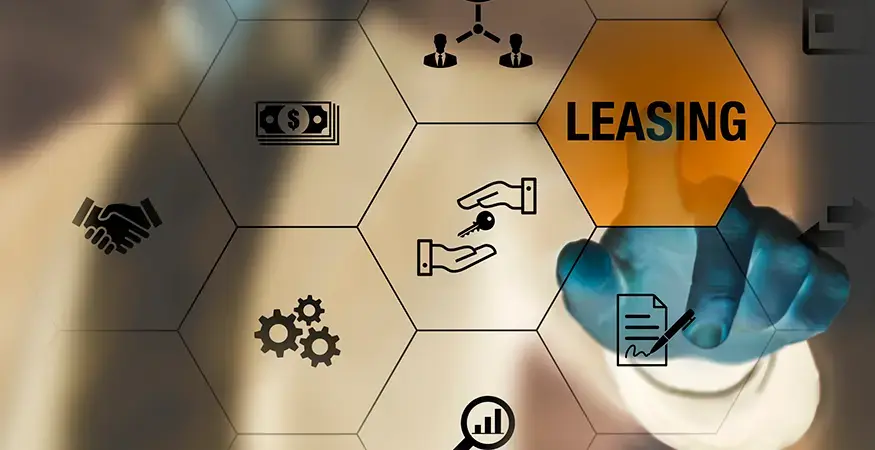You’ve weighed the options of what type of copier or multifunction printer (MFP) you’ll need, along with any accessories or specialized settings. But how much thought have you put into how you’ll pay to use this machine?
Your organization has options. Renting, leasing or buying a piece of office technology are the three most common.
Which option is better? Here’s five important things to consider that will help to point you in the right direction when evaluating your options for business technology equipment:
- Equipment Needs and Usage
- Budgeting and Pricing
- Flexibility
- Equity Options
- Managed Print Services
1. Equipment Needs and Usage
If you have existing equipment, assess your organization’s use across departments. How are they currently using the equipment? What kinds of projects do they expect within the next year? Or within the next three years? What are the strategic plans for the future of the company as a whole?
Answers to these questions will identify what types of equipment you will need and where the equipment should be optimally placed in your office. In addition, this analysis will show opportunities where your equipment could be enhanced or how the size of your fleet could change in order to adapt with the evolving needs of your organization.
2. Budgeting and Pricing
If you need a large fleet of copiers or MFPs, purchasing equipment could be a major capital expense. Similarly to a small business, investing a sizeable amount of money into just one machine could be more costly than what a start-up business can afford.
A more cost-effective way that many organizations have leveraged to address their office equipment needs is to lease equipment. For most, the benefits far outweigh purchasing equipment outright. Most notably, it allows businesses to be more accurate in forecasting their budgets, while allowing them to continue building business credit and standardize monthly cash flow.
Leasing or rental prices typically are based on the machine that you choose, plus the average number of copies you make per month. Many organizations also choose to add equipment maintenance and just-in-time toner delivery as a part of their lease or rental contract with a trusted Managed Print Services (MPS) provider.
Lease contracts tend to be less expensive on a monthly basis, compared to renting. However, renting is often preferred for short-term contracts when equipment is only needed temporarily.
RELATED: What are Printer and Office Copy Machine Prices in 2023?
3. Flexibility
Buying equipment often indicates that you plan on keeping it for a long time.
But in today’s business world, change is constant. That’s why organizations are increasingly opting for equipment leases. Leases are more flexible than purchasing equipment and come in a term length designed to fit your needs. The most common lease terms are 36, 48 and 60 months, but some business technology dealers will offer lease terms as short as 12 months.
In addition, at the end of your lease – you’ll have options!
Once your lease term is up, you’ll be able to choose to extend the lease (typically at discounted pricing) using the same equipment, renew the lease by upgrading to newer equipment under new terms, turn in the equipment or take ownership of the equipment through a buy-out option.
For small, start-up organizations that are expanding rapidly, renting equipment might present a better option. Renting allows an organization to upgrade or change equipment within a shorter time frame than leases typically allow.
4. Equity Options
Renting equipment provides no equity at the termination of the contract. However, purchasing equipment includes full equipment equity – you’ll own the equipment, but over time it will have aged. Depending on the needs of your organization the equipment may still fit, or you may be at risk of reduced employee productivity compared to more modern machines.
Leasing allows options. If your needs change by the end of your lease, you can choose to return the old equipment and upgrade to new equipment. Or if you like the machine, you could choose to extend your lease or take ownership of the machine for a nominal cost without penalties. If the machine meets your current needs and you don’t see a need for an upgrade in the near future, taking ownership of your current machine is a great option to consider.
5. Managed Print Services
Working with a MPS provider is becoming very popular with organizations of all sizes.
While a MPS provider will assess your current print needs and recommend solutions to create efficiencies, they will also free up your IT Team to focus on more pressing corporate challenges and worry less about maintaining copiers and MFPs.
If a machine is running low on toner, or hardware needs to be replaced, your MPS provider will already have received an alert and started the steps to service the issue and avoid costly downtime. It’s a fast method to quickly see reductions in overall printing costs, staff frustrations and operational downtime, almost immediately.
Another benefit of working with a MPS provider is security. With cyberattacks on the increase, MPS solutions can utilize output management software to give you greater control of print behaviors. Services like secured print release, mobile print release, authentication and auditing and scanning security can give you the peace of mind you need to know to ensure that your information and files are secure and don’t end up in the wrong hands.
Whether buying, leasing or renting your office equipment – enlisting the help of a skilled MPS provider could save your organization both time and money.
Which option is best for my organization?
Searching for an experienced business office technology dealer who will listen to your needs, address them and help you plan for the future? Contact the experts at the Gordon Flesch Company for a no-obligation, 30-minute, business technology needs assessment to identify potential gaps and opportunities for improving workflows and efficiencies.
If you do decide to lease, be sure to evaluate the company beforehand to make sure they are able to structure lease terms and lease lengths to fit your needs. Also ask whether they will finance your lease using internal funding or whether they will broker the lease to an outside funding source.
GFC Leasing is fully managed in-house without any third-party involvement. Leasing is available for a variety of business assets, in lease lengths from 12 to 63 months with no hidden fees or surprises for end-of-term buyouts.










